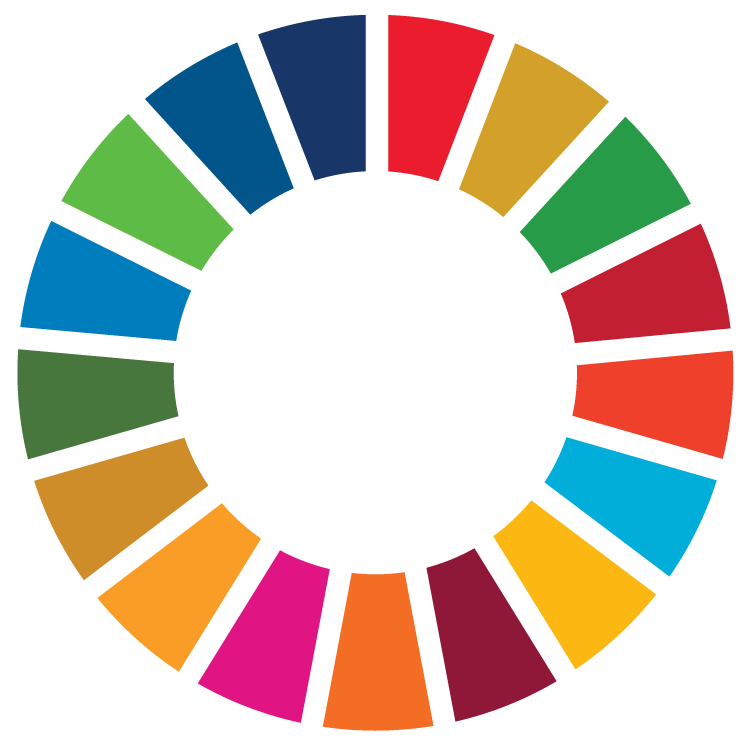Text traduït
Aquesta assignatura s'imparteix en anglès. El pla docent en català és una traducció de l'anglès.
La traducció al català està actualitzada i és equivalent a l'original.
Si ho prefereixes, consulta la traducció!
Texto traducido
Esta asignatura se imparte en inglés. El plan docente en español es una traducción del inglés.
La traducción al español está actualizada y es equivalente al original.
Si lo prefieres, ¡consulta la traducción!
Original text
This subject is taught in English. The course guide was originally written in English.
Course
Biology
Subject
Geographic Information Systems
Type
Compulsory (CO)
Academic year
2
Credits
6.0
Semester
2nd
| Group | Language of instruction | Teachers |
|---|---|---|
| G11, classroom instruction, mornings | English | Judit Molera Marimon |
| Núria Ferrer Ramos |
Sustainable Development Goals (SDG)

- 15. Life on land
Objectives
Geographic Information Systems (GIS) is a conceptualized framework that provides the ability to capture and analyze spatial and geographic data. GIS computer software allow to store, visualize, analyze, modify and relate any type of geographic information, in order to facilitate the study, management and territorial planning. GIS are becoming an increasingly part of modern biological sciences.
In this course, students will learn GIS basic principles and their relationship to geographic data and how to put these concepts into practice by developing various practical exercises using different software as QGIS, Instamaps, Vissir, Hipermapa, Googlearth, etc.
Learning outcomes
- LO1. Know the bases of the computer programs of the type Geographic Information Systems, of main use in the professional, academic and research field.
- LO2. Know the basics of spatial analysis: know how to obtain mapping to create a project, give guidelines and create a methodology that allow to reach a result; knows how to distinguish between raster and vector mapping.
- LO3. Interprets and analyzes cartography in the different fields of biology.
- LO4. Search for digital cartographic information.
- LO5. It proposes an application of instrumental techniques that provide solutions with possible technical and commercial value.
- LO6. Understands oral and written messages of different types, fully expressed in their own languages and English.
- LO7. It develops correctly in the general use of ICTs, and especially in the technological environments typical of the professional field.
- LO8. Apply their knowledge to solve problems in complex or professional and specialized work fields that require the use of creative and innovative ideas.
Competencies
General skills
- Show a positive attitude to lifelong learning, innovation, creating value and acquiring knowledge.
Specific skills
- Have oral and written skills in English for communicating results, conclusions and processes deriving from research in the field of biology.
- Interpret maps using geographic information systems and, by identifying materials and geological processes, establish relationships between geology and the distribution of species.
- Manipulate databases used in the field of biology.
- Master basic laboratory techniques in biology, apply protocols and use appropriate instruments, observing safety norms and correctly interpreting the results obtained.
Basic skills
- Students can apply their knowledge to their work or vocation in a professional manner and have competencies typically demonstrated through drafting and defending arguments and solving problems in their field of study.
Core skills
- Use oral, written and audiovisual forms of communication, in one's own language and in foreign languages, with a high standard of use, form and content.
Content
- Topographic maps
- Introduction to GIS
- Cartography
- UTM coordinate system
- Vector models
- Raster models
- Data source and data base
- Remote sensing
- Statistical analysis in GIS
- Thematic cartography for the conservation of biodiversity
Evaluation
The subject follows a continuous evaluation through 5 assignments along the semester and 2 exams/questionnaires. The evaluation takes into account both the theoretical and practical aspects of the subject. The final overall mark is obtained from the ponderated mean of the assessment items.
- Assignment 1. Glossary: 5%
- Assignment 2. My first project: 15%
- Assignment 3. Digitising: 15%
- Assignment 4. Remote sensing: 25%
- Assignment 5. Cartography of biodiversity: 20%
- Exams/questionnaires: 20%
All Assignments must be delivered in order to pass the course.
A minimum mark of 5 of each of the exam and assignment is required to calculate the overall mark.
Assignments delivered out of date will have penalization.
Methodology
The theoretical contents will be given in plenary lectures as well as in sessions with the resolution of real cases.
The practical skills will be improved by working in small groups in the classroom using computers or your personal laptop.
Software used: QGIS, Instamaps, Hipermapa, Googlearth and Mobile GIS apps.
Bibliography
Key references
- Otto Huisman & Rolf A. de By (2009). Principles of Geographic Information Systems. Retrieved from https://webapps.itc.utwente.nl/librarywww/papers_2009/general/principlesgis.pdf
- (2022). QGIS Training Manual. Retrieved from https://docs.qgis.org/2.18/en/docs/user_manual/
- MacLeod, C.D. (2015). GIS for Biologists: A practical introduction for undergraduates. Pictish Beast Publications.
Further reading
Teachers will provide complementary bibliography and compulsory reading throughout the course via the Virtual Campus.